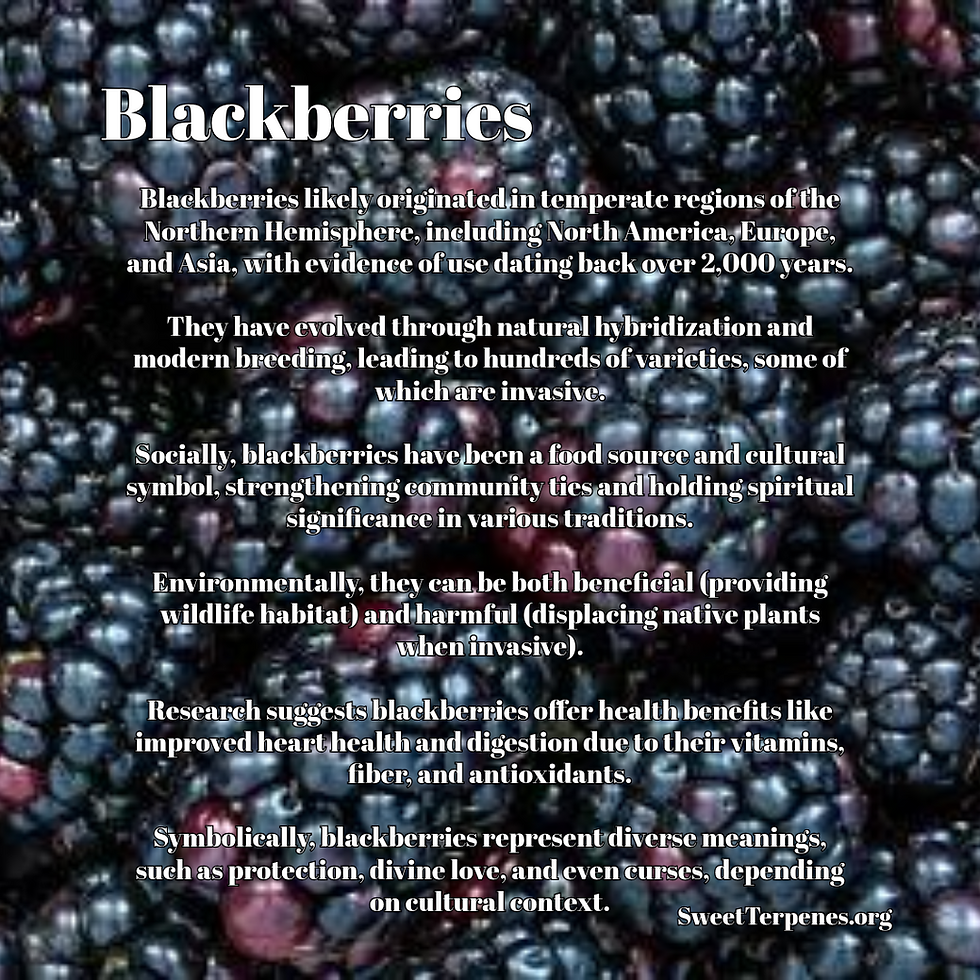All About Wheat Flour
- Heather Marie Stanley

- Jul 19
- 6 min read
Comprehensive Survey Note on Wheat Flour

This detailed survey note explores the multifaceted aspects of wheat flour, including its origin, evolution, environmental and social impacts, symbolism, and health benefits, based on extensive research from reliable sources. The analysis aims to provide a thorough understanding for readers interested in the historical, ecological, societal, cultural, and nutritional dimensions of this staple food.
Origin and Historical Context
Wheat flour’s origins are deeply rooted in human agricultural history, with evidence suggesting wheat was first cultivated around 9600 BC in the Fertile Crescent, encompassing modern-day Iraq, Syria, Lebanon, Jordan, Israel, and Palestine. This region, known for its fertile soils, saw early humans domesticate wheat, marking one of the earliest transitions from hunter-gatherer to agricultural societies.
Archaeological findings, such as those at the Natufian site of Shubayqa 1 in northwest Jordan, indicate bread made from ground einkorn wheat and other plant materials was produced as early as 12,400 BC, highlighting wheat’s early significance. By 6000 BC, evidence of flour production through crushing wheat seeds between simple millstones was widespread, as noted in Roman-era practices. The English word “flour” derives from the Old French “fleur,” meaning “the finest part,” reflecting the refining process to separate the purest wheat components.

Wheat cultivation spread rapidly, reaching Cyprus by 8600 BC, Greece by 6500 BC, Egypt shortly after 6000 BC, and extending to Germany and Spain by 5000 BC. This diffusion underscores wheat’s role as a foundational crop for early civilizations, supporting population growth and urbanization.
Evolution of Wheat Flour Production
The evolution of wheat flour production reflects technological advancements and changing dietary needs. Initially, wheat was ground between stones, a method documented since Roman times (around 6000 BC), to produce flour for basic sustenance. Over centuries, wheat varieties diversified, with durum wheat becoming essential for pasta and soft wheat for bread, as noted in historical agricultural practices. The Industrial Revolution, particularly in the 19th century, introduced steel roller mills, revolutionizing milling by allowing precise separation of the wheat kernel into bran, germ, and endosperm. This enabled the production of refined white flour, which was cheaper and more shelf-stable, making it accessible to broader populations in growing urban centers. However, this shift also led to nutrient loss compared to whole wheat flour, which retains all parts of the grain.
Today, wheat flour is a versatile ingredient in global cuisine, used in bread, pasta, noodles, semolina, bulgur, couscous, and baked goods like cakes and biscuits. The process has evolved to include fortification with vitamins and minerals in many regions, addressing nutritional deficiencies, as seen in historical data from the UK and Kenya.

Supporting URL: Flour - Wikipedia
Environmental Impact
Wheat flour production has significant environmental implications, primarily stemming from wheat cultivation.
Research highlights several key impacts:
• Greenhouse Gas Emissions: A 2017 study published by the BBC found that synthetic fertilizers, particularly ammonium nitrate, account for 43% of the global warming potential in a loaf of bread, driven by emissions like nitrous oxide (N₂O) from urea, as noted in a 2025 life cycle assessment of Brazilian wheat. Field emissions during cultivation are a major contributor to the carbon footprint.
• Soil Degradation: Intensive tilling and continuous wheat cultivation deplete soil nutrients and disrupt the natural balance of fungi and microorganisms, as detailed in a 2021 sustainability study. This can lead to long-term soil health decline, affecting future agricultural productivity.
• Water Consumption: Wheat is a water-intensive crop, with significant consumption noted in regions like China, where water use is a hotspot for environmental impact, according to a 1993 review of wheat production systems.
• Biodiversity Loss: Large-scale monoculture wheat farming reduces biodiversity, increasing reliance on chemical pesticides and fertilizers, which can harm ecosystems, as discussed in a 2023 Mongabay article.
Mitigation strategies include adopting sustainable practices such as reducing fertilizer use, improving efficiency, and using organic or naturally-derived fertilizers. Incorporating renewable energy, like photovoltaic systems, into production processes can lower impacts, as suggested by a 2025 Brazilian study. Diversifying crops and exploring sustainable plant-based ingredients as substitutes in bread making, as proposed in a 2022 Nature article, can also enhance environmental sustainability.
Supporting URL: How can the environmental impacts of wheat cultivation and wheat flour production be reduced? A life cycle assessment of Brazilian wheat
Social Impact
Wheat flour’s social impact is profound, influencing nutrition, culture, economy, and public health:
• Nutritional and Health Significance: Wheat is a staple food for billions, providing essential nutrients like B vitamins, iron, magnesium, and zinc, especially in whole wheat flour, as noted in a 2024 WebMD article. However, refined wheat flour, which lacks these nutrients, has been linked to diet-related diseases, as highlighted in a 2024 BCG report. Gluten in wheat poses challenges for individuals with celiac disease, wheat allergy, or non-celiac gluten sensitivity, with increasing concerns noted in a 2016 PMC study, particularly in North America and Europe.
• Cultural and Economic Role: Wheat has been central to human civilization, supporting population growth and urbanization, as seen in its historical spread across continents. It is deeply embedded in cultural practices, with bread often symbolizing sustenance and community, as discussed in a 2019 Wheat Foods Council guide. Economically, wheat production and flour milling are major industries, influencing food security and agricultural economies, with fortification programs addressing nutritional deficiencies, as detailed in a 2020 NCBI guideline.
• Public Health and Dietary Trends: The rise of gluten-free diets and concerns about refined flour’s health impacts have led to increased consumption of whole grains and alternative flours, as noted in a 2021 Lyons’ Share Wellness article. Fortification of wheat flour with vitamins and minerals has been implemented in many regions to address nutritional deficiencies, enhancing public health outcomes.
• Sustainability and Food Systems: Reliance on wheat flour has raised concerns about food system resilience, particularly in developing countries where climate conditions are unsuitable for wheat cultivation, as discussed in a 2022 Nature article. Sustainable alternatives, such as composite flours blending wheat with other grains or legumes, are being explored to reduce dependency and improve sustainability, addressing vulnerabilities to supply shocks.

Symbolism
Wheat flour, derived from wheat, carries rich symbolic meaning across cultures and religions, reflecting its deep cultural significance:
• Abundance and Fertility: Wheat has long been a symbol of prosperity and fertility, representing the bounty of the earth. In ancient Egypt, it was associated with deities like Isis, symbolizing the cycle of life and death, as noted in a 2024 SimplyBeyondHerbs article. This symbolism is echoed in ancient Greek and Roman cultures, where wheat was offered to deities like Demeter and Ceres during agricultural festivals.
• Spiritual Growth: In the Bible, wheat symbolizes life, sustenance, and spiritual renewal, often linked to the harvest and the bread of life, as detailed in the same article. This reflects its role in religious narratives and rituals.
• Cultural Significance: Wheat’s transformation from seed to plant to bread mirrors personal and spiritual growth, symbolizing renewal and transformation, akin to the pinecone’s symbolism. In Mesopotamia, wheat represented divine favor and prosperity, underscoring its integral role in early civilizations.
• Contemporary Relevance: These symbols persist in modern cultural practices, with wheat often featured in harvest festivals and religious ceremonies, reinforcing its enduring legacy.
Supporting URL: Wheat Symbolism Since Ancient Civilizations - SimplyBeyondHerbs

Health Benefits and Considerations
Wheat flour, particularly whole wheat flour, offers several health benefits, but also presents challenges, especially for those with specific sensitivities:
• Nutrient-Rich Profile: Whole wheat flour is rich in fiber, B vitamins, iron, magnesium, zinc, and antioxidants, supporting digestive health, cardiovascular function, and overall nutrition, as detailed in a 2024 ÖZMEN UN article. Its high fiber content promotes regular bowel movements and gut health, while B vitamins and minerals support energy metabolism and immune function.
• Energy Source: Wheat flour provides complex carbohydrates, offering sustained energy, making it a staple in many diets, as noted in a 2019 Healthline article.
• Fortification Benefits: In many regions, wheat flour is fortified with additional vitamins and minerals, such as folic acid, to address nutritional deficiencies, enhancing public health outcomes, as seen in historical UK and Kenyan practices.
• Health Concerns: However, wheat contains gluten, a protein that can trigger adverse reactions in individuals with celiac disease, wheat allergy, or non-celiac gluten sensitivity, as discussed in a 2016 PMC study. Symptoms can include bloating, fatigue, and neurological conditions, with modern wheat varieties potentially more inflammatory, as noted in a 2021 Lyons’ Share Wellness article. Refined wheat flour, lacking the bran and germ, is less nutritious and may contribute to diet-related diseases when consumed excessively, as highlighted in a 2024 BCG report.
Supporting URL: Health Benefits of Whole Wheat Flour | ÖZMEN UN
*AI Generated











Comments